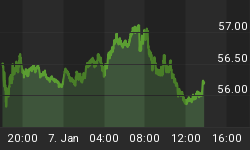Over the last two weeks, seemingly good economic news offered some shreds of optimism to a stock market that was desperate for a pick-me-up.
The week before last, the National Bureau of Economic Research declared that the US recession had ended back in June 2009. At the beginning of last week, news came in that month-on-month retail sales had risen by 0.4 percent. Combined with successful government debt auctions in the eurozone, increasing expectations that Republicans will take back the House (thereby blunting the leftward drift of Washington), and hopes that a new round of quantitative easing will pump up growth, mainstream analysts are developing a feeling of near-euphoria.
Although it hard to begrudge the punch drunk for grasping at a little hope, investing is a dispassionate endeavor that calls for close and realistic analysis. In that spirit, let's dig deeper into the recent 'good news.'
First, the single month's rise in retail sales was a blip on what has been a long-term downtrend. Furthermore, retail sales in August typically get a large boost from seasonal 'back to school' spending. This year, retail sales were boosted further by temporary tax incentives and vendor discounts.
Second, the successful auction of debt from worrisome eurozone countries, like Ireland, only served to further camouflage the ongoing risk of sovereign default by these states. None of them have committed to a comprehensive program of austerity and market liberalization - Ireland maintains a 'too big to fail' doctrine while Greece is on the verge of riots from its so-far modest efforts at privatization. None of the PIIGS would have had successful bond sales if Germany hadn't been pressured into becoming a 'sovereign of last resort' for the whole currency area.
Apart from health of the weakest nations, a more important issue is understanding how sovereign debt is analyzed by investors in the first place. Those who consider buying government debt have for many years relied on backward-looking measurements such as debt-to-GDP to analyze the investment quality.
But that's only half the picture, and oftentimes it's even less than that. It does not include off-balance sheet items such as unfunded pensions, social security payments, or health obligations. For the US, I estimate this total debt amounts to some $134 trillion - nearly ten times the 'official' figure.
On a deeper level, using the public debt-to-GDP ratio to assess sovereign solvency implies that governments have access to the entire annual production of their economies. In reality, they have access only to that portion which is taxable. As taxes increase, there are natural limits imposed by increasing inefficiency and avoidance behaviors. Therefore, 'net GDP,' the portion available to the government for debt service, is significantly smaller than the gross GDP of the nation.
With real government debts, including off-balance sheet items, far larger than officially recognized and net GDPs far smaller that top-line GDP, the solvency of many sovereigns should be considered dubious at best.
For example, the debt-to-GDP ratio of the United States is currently 65 percent, which puts the country towards the solvent end of the debt spectrum among developed Western nations. However, the real debt-to-net GDP ratio is a staggering 358 percent, making the US the most insolvent nation in the group, behind even Greece!
In the interest of brevity, I will only touch on the fact that the above number is actually still an underestimate. It does not account for the portion of gross GDP claimed by state and municipal governments to service their debts. After all, all levels of government tax the same base. So, the effective portion of GDP available to the federal government is even smaller still.
The third problem with the late round of 'good news' is that while a GOP sweep of House races looks likely, it is unlikely to make a large impact on policy. It is doubtful that the small number of freshman GOP Representatives will be able to win over their more mature, big government-minded colleagues. Any pending GOP 'small government' revolution will be heavy on talk and short on accomplishments.
It should come as no surprise that the Republicans' "Pledge to America" lacked specific commitments for cost-cutting. Republicans are terrified of becoming the party of austerity, and the next Republican President will want to avoid being seen as 'Hoover 2.0'. Therefore, any structural changes will come slowly - and perhaps too late.
Finally, whatever actions the Fed takes in the name of further stimulus will have the same unintended consequences as all previous stimulus efforts. Long-term sustainability will be sacrificed in favor of a short-term boom. Since World War II, the underlying strength of the US economy has allowed the central bank to get away with this strategy, as the economy simply outgrew the inefficiencies caused by monetary manipulation. But what happens when we are in a period of secular decline?
So we see that Wall Street is again playing the part of Pangloss. Unfortunately, their purported inklings of a renewed rally in the US markets do not stand up to candid appraisal.
Please note: Opinions expressed are those of the writer. Past performance does not guarantee future returns, investments may increase or decrease in value and you may lose money.
For in-depth analysis of this and other investment topics, subscribe to Euro Pacific's Global Investor Newsletter. Click here for your free subscription.
Click here to download Euro Pacific's Special Report: My Five Favorite Gold & Silver Mining Stocks.
Be sure to pick up a copy of Peter Schiff's just-released economic fable, How an Economy Grows and Why It Crashes. Click here to learn more and order.















